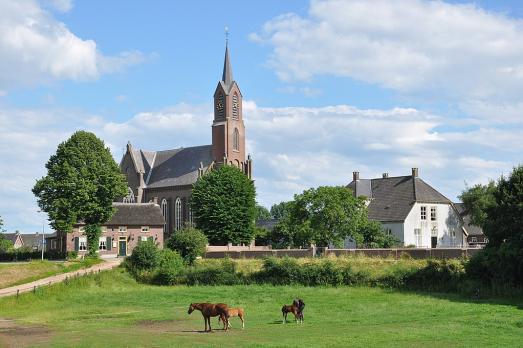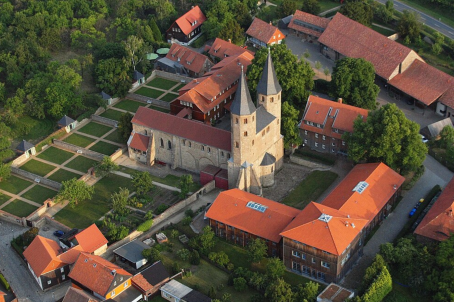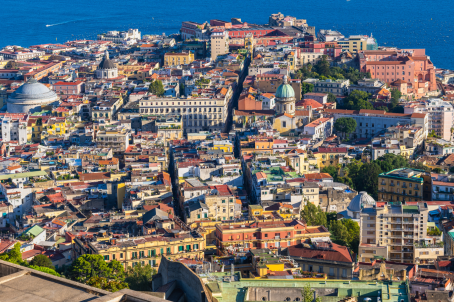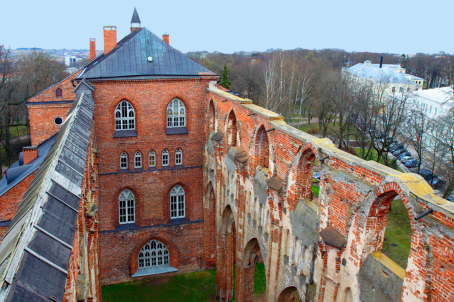Heilige Hippolytus
Hippolytushoef, NL
Single-nave neo-Romanesque hall church with wooden facade tower. Renovated in 1946.
Here you can search for a building to visit. You can use the map find destinations, or you can use the filters to search for a building based upon what different criteria.
Hippolytushoef, NL
Single-nave neo-Romanesque hall church with wooden facade tower. Renovated in 1946.
Groot Genhout, NL
In 1933 the parish was founded and separated from the parish of Beek. That year the rectory was also built to the design of architect Stephan Dings from Beek. In the period 1936-1937 the church was built to the design of architect Alphons Boosten from Maastricht. The church was designed inspired by the façade of the Romanesque Basilica of Our Lady in Maastricht and was built in a romantic-modernist style. The church is considered one of the most important exponents of the so-called Limburg Reveil, a regional art movement from the Interbellum that often found its inspiration in a self-confident, personal and romantic approach to its own native region. Artists who contributed to the creation of the church building are Henri Jonas, Charles Eyck, Joep Nicolas, Charles Vos, Gisèle Waterschoot van der Gracht, Jacques Verheyen, Jef Scheffers, Yvonne Trypels and Eugène Quanjel.
Blerick, NL
Current parish church from 1954. Three-aisled basilica without tower.
Ooij, NL
The Roman Catholic Church of St. Hubertus dates from 1906. The church replaced a water board church from 1835. The church is a three-aisled neo-Gothic pseudo-basilica designed by Caspar Franssen (1860-1932). During the Second World War, the church served as a shelter for residents of Nijmegen, who were left homeless by the bombing of 1944. Shortly afterwards, the church itself suffered damage from shelling. The church was restored after the war. The tower was not built until 1955. In the church is a memorial window from 1948, made by R. Smeets. This church is listed as a Municipal Monument of the Netherlands.
Hegelsom, NL
On 18 August 1932, the tender for this church with rectory took place. The architect was Ir. JGC Franssen from Roermond and the contractor was the firm L. Everaerts from Horst. Due to the dry autumn, construction proceeded smoothly and the official laying of the foundation stone could take place on Easter Monday 17 April 1933. On 22 October 1933, the official establishment of the rectory was announced by an Episcopal letter. The boundaries of the rectory were established here.

Alem, NL
Heilige Hubertus is a Roman Catholic Church built between 1872 and 1875. The façade was rebuilt in 1963. In 2017, the church was closed and sold. However, since 2022 celebrations are held once a month.
Rotterdam, NL
The Eendrachtskapel is the oldest Roman Catholic Church in Rotterdam that is still used for Roman Catholic worship. It was built in 1871 and was used until the 1980s as the Chapel of the Most Holy Sacrament, where the Eucharistic Bread, the Body of Christ, was exposed in the monstrance day and night. This Perpetual Adoration was provided by the "Sisters of Perpetual Adoration". This sister congregation has its mother house in Brussels. The large rose windows also feature the symbol for the Host Miracle of Brussels. From this chapel, the adjacent monastery, novitiate and Episcopal Retreat House "Thabor", much charity work has been done within the city of Rotterdam. For example, the "Huize Antonius" on the Nieuwe Binnenweg in Rotterdam (formerly called the Antoniusgesticht) was founded from this chapel. The now internationally known and operating Memisa (Medical Mission Action) also started in this chapel. Its office was located in the old novitiate, which was later replaced by a new building. The novitiate and the monastery had their own chapel, as did the Retreat House. Next to it was the Sacrament Chapel. Of all these buildings and chapels, the former Sacrament Chapel, now called the Eendrachtskapel, is the only one left. When the Rotterdam Cathedral on the Westzeedijk was demolished in 1968, the chapel was elevated to parish church. It was given the patron saints of the cathedral and the Diocese: HH Laurentius and Ignatius (of Loyola). The statue "Maria van de Wijnhaven" also came from the cathedral to the Eendrachtskapel. Originally, the statue stood above the high altar of the Roman Catholic Church of the Wijnhaven, which was demolished in 1926. In order to preserve and honour the Eucharistic character of the Chapel, following the example of the Perpetual Adoration, which was discontinued with the departure of the sisters in the 1980s, the Blessed Sacrament of Christ's Body is displayed in the Monstrance. The Holy Eucharist, the Mass, is then celebrated. In this way, the Eendrachtskapel has retained its function as a chapel of silence to this day. An oasis of peace and prayer in the hectic and business centre of the world city of Rotterdam. The maintenance of the chapel requires constant attention. A selection of the work carried out in 2016-2017:
Heibloem, NL
The residents of Heibloem and the surrounding area traditionally attended services in the Broederskerk of the monastery in the village. When the monastery was requisitioned by the German occupiers in 1940, the Masses had to be celebrated in a beugelbaan. After the Second World War, the Brothers had plans to expand their boarding school, and a rectory was established to provide for the construction of their own church building and village school. Pierre Weegels was asked to be the architect. He designed a church that resembles the Sint-Isidoruskerk in Haler. However, only the nave was built. The church was consecrated in 1952.
Sint Isidorushoeve, NL
New parish and hamlet St. Isidorushoeve, founded in the 1920s. Village and church bear the name St. Isidorus, patron saint of the rural population. The church is an early work by Joh. Sluijmer from Enschede. It is a cruciform church on a strongly centralizing ground plan, built according to the concept of the people's church, in traditionalist forms with references to the Gothic. The front tower is crowned by a high, incurved spire.
Haler, NL
Church with a belltower.

new
Nestled amidst the serene landscapes of the Harz region, lies a hidden gem for nature enthusiasts and history buffs alike - the Harz Monastery Hiking Trail. Lace up your hiking boots and embark on this captivating adventure that will transport you back in time.

The Holy Mile (Miglio Sacro) of Naples is a one-mile-long itinerary, through sacred places linked to the city's patron saint, San Gennaro, in the Rione Sanità district. Discover the city from a new perspective with this unique walking tour.

As a university city, cultural offerings abound in Tartu and will reach their peak after being designated one of three European Capitals of Culture for 2024. In this list, we've compiled the most interesting sacred places to visit in and around the old town.